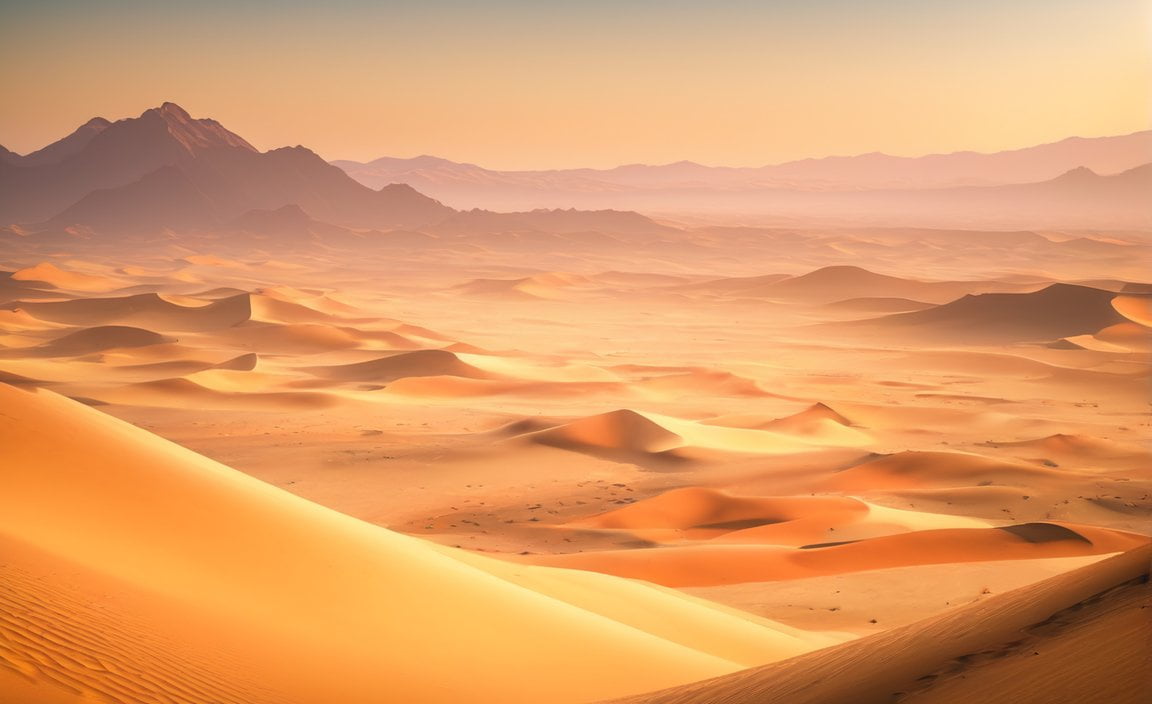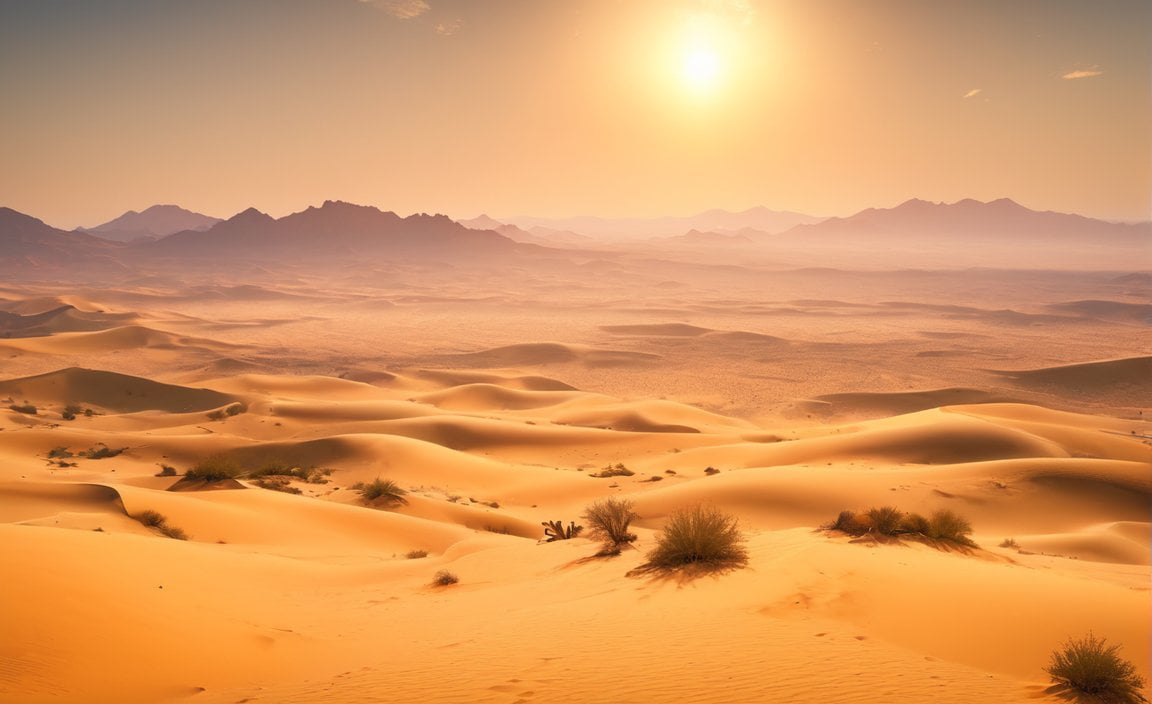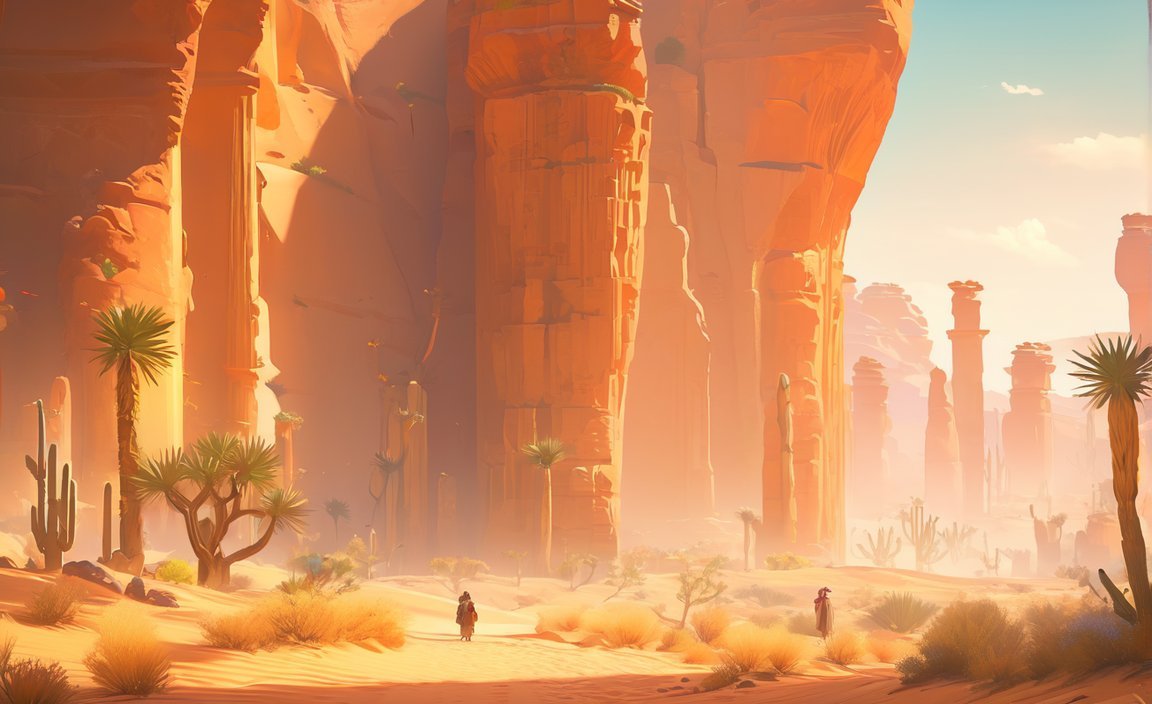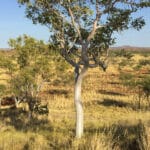Discover the awe-inspiring beauty and hidden treasures of California’s arid region in the mesmerizing article, “Desert Wonderland: Exploring 5 Captivating Facts about California’s Arid Region.” Delve into a world of fascinating landscapes, resilient flora and fauna, geological peculiarities, captivating cultural history, and the crucial role this desert region plays in maintaining ecological harmony. Join us on a journey to uncover the secrets of this remarkable and diverse ecosystem.

Key Takeaways:
1. The largest desert town in California is Lancaster, serving as a key entry point for tourists visiting national desert parks.
2. California’s desert region is home to historical sites and renowned national parks like Joshua Tree, Death Valley, and Mojave.
3. The Sonoran Desert, the largest desert in California, boasts diverse flora and fauna, including the iconic Joshua Trees.
4. Death Valley, the second largest national park in the region, is famous for its extreme climate and being one of the hottest places on Earth.
5. The Great Basin Desert, covering a significant portion of California, offers stunning mountain ranges, such as the White Mountains and Inyo Mountains, and unique ecosystems that attract nature enthusiasts.
5 Facts About the Desert Region in California
The desert region of California holds a mesmerizing allure, with its vast landscapes, resilient flora and fauna, geological peculiarities, captivating cultural history, and crucial role in maintaining ecological harmony. Join me as we explore five captivating facts about this arid wonderland.
Fact 1: Lancaster – The Gateway to Desert Exploration
Our journey through the California Desert begins in Lancaster, the largest desert town in the state. With a population of over 156,000 people, Lancaster serves as a vital entry point for tourists eager to explore the national desert parks. This bustling town provides a perfect starting point to begin your desert adventure, ensuring you have access to all the amenities and resources you may need.
Fact 2: Historical Sites and National Parks Galore
The California Desert enchants visitors with its historical sites and awe-inspiring national parks. A visit to this region wouldn’t be complete without exploring the iconic Joshua Tree National Park, Death Valley National Park, and Mojave National Preserve. These renowned parks offer breathtaking landscapes and unique natural wonders waiting to be discovered. From the twisted branches of the Joshua Trees to the otherworldly beauty of Death Valley’s extreme climate, prepare to be captivated by the unparalleled splendor of these national treasures.
Fact 3: The Sonoran Desert – A Flourishing Oasis
Covering over 100,000 square miles, the Sonoran Desert takes the crown as the largest desert in California. Within its expansive boundaries, you’ll encounter a vibrant tapestry of diverse flora and fauna. Keep an eye out for the iconic Joshua Trees, which thrive in the Mojave Desert within the Sonoran Desert region. This desert oasis serves as a testament to the resilience and adaptability of life in harsh environments.
Fact 4: Death Valley – Nature’s Extreme Playground
Prepare to be amazed by Death Valley, the second largest national park in the California Desert region. This arid wonderland is infamous for its extreme climate, making it one of the hottest places on Earth. In fact, the highest ambient air temperature ever recorded was a scorching 134 degrees Fahrenheit at Death Valley’s Furnace Creek on July 10, 1913. The surreal landscapes and the sheer awe-inspiring nature of this unparalleled region will leave you with an unforgettable experience.
Fact 5: The Great Basin Desert – A Tapestry of Unique Ecosystems
Spanning across a significant portion of California, the Great Basin Desert captivates visitors with its majestic mountain ranges, including the White Mountains and the Inyo Mountains. These towering peaks create a striking contrast against the arid desert landscape, inviting exploration and fostering unique ecosystems. As you wander through this enchanting desert region, you’ll be entranced by its incredible beauty and the intricate interplay between its geological features and the diverse life that calls it home.
In summary, the California Desert region is a world of wonders waiting to be discovered. From the historical sites and national parks to the Sonoran Desert’s flourishing oasis, Death Valley’s extremes, and the unique ecosystems of the Great Basin Desert, this region offers a mesmerizing experience for nature enthusiasts and adventure-seekers alike. So, embark on a journey to this arid paradise and unlock the secrets of its captivating landscapes and awe-inspiring biodiversity.
Here are some interesting facts about different biomes that you may not know:
- 5 facts about biomes: Discover the incredible diversity of biomes and learn about the unique characteristics that define each one.
If you’re curious about snapping turtles, check out these fascinating facts:
- 5 facts about snapping turtles: Dive into the world of snapping turtles and uncover intriguing details about their appearance, behavior, and habitat.
Temperate deciduous forests are mesmerizing ecosystems, and here are five facts to enhance your understanding:
- 5 facts about temperate deciduous forest: Step into the enchanting world of temperate deciduous forests and uncover the wonders of this biodiverse biome.
Do you want to learn more about temperate forests? Here are some intriguing facts for you:
- 5 facts about temperate forest: Immerse yourself in the beauty of temperate forests and gain insights into the unique flora, fauna, and climate that make them so remarkable.
2. Diverse Desert Flora and Fauna
The deserts of California are not just barren landscapes, but vibrant ecosystems teeming with diverse flora and fauna. From resilient cacti to elusive desert animals, these arid regions are home to a surprising array of life. Let’s explore some fascinating facts about the diverse desert flora and fauna in California’s arid region.
Fact 1: Survivors in Extreme Conditions
In the harsh desert environment, only the toughest organisms can thrive. The diverse flora of California’s deserts showcases incredible adaptability. From the iconic Joshua Trees in the Mojave Desert to the vibrant wildflowers that bloom after a rare rainfall, these plants have evolved ingenious strategies to survive the scorching heat and scarce water resources. Their unique physiology and deep-rooted systems enable them to store water and withstand prolonged droughts.
Diverse desert fauna have also adapted to the extreme desert conditions. From the nimble kangaroo rats and elusive kit foxes to the iconic desert tortoises, these animals have developed remarkable features to withstand the blistering heat and scarcity of resources. Their efficient cooling mechanisms and efficient water retention make them truly remarkable survivors in this unforgiving environment.
Fact 2: A Haven for Endangered Species
California’s deserts play a crucial role in preserving biodiversity and harboring endangered species. One such example is the desert pupfish, found in the Mojave Desert. This small, vibrant blue fish has adapted to survive in isolated desert springs and pools. Unfortunately, due to habitat loss and water depletion, they are now critically endangered. Efforts are underway to protect their fragile habitat and ensure their survival.
Fact 3: A Botanical Marvel
The deserts of California house a stunning variety of plant species. The Joshua Tree, synonymous with the Mojave Desert, stands tall as a botanical marvel. Its twisted branches and distinctive silhouette make it an iconic symbol of these landscapes. But the diversity doesn’t end there. Cholla cacti, creosote bushes, brittlebushes, and barrel cacti are just a few examples of the many plant species that thrive in this arid region. Each plant has its own unique adaptation to ensure its survival in the desert.
Fact 4: Surprising Biodiversity
Contrary to popular perception, the deserts of California are not devoid of wildlife. These arid regions are home to an astonishing variety of animal species. The desert bighorn sheep, with its impressive horns curving back over its head, roams the rocky mountainsides. The roadrunner, with its distinctive crest and agile running abilities, scurries across the desert floor. Numerous reptiles, such as the iconic desert iguana and the venomous desert sidewinder rattlesnake, also call this region home. The intricate web of life in the desert is truly awe-inspiring.
Fact 5: Fragile Ecosystems
The fragile ecosystems of California’s deserts are delicately balanced, depending on the intricate interactions between flora, fauna, and the environment. Alterations to these ecosystems can have far-reaching consequences. Human activities, including habitat destruction and invasive species, pose significant threats to the delicate balance of desert life. Conservation efforts, such as habitat restoration and sustainable practices, are crucial for safeguarding these precious ecosystems and ensuring the survival of the diverse flora and fauna that call them home.
Key Takeaways:
- The deserts of California are not barren landscapes; they are vibrant ecosystems teeming with diverse flora and fauna.
- The resilient desert flora has evolved ingenious strategies to survive the harsh desert conditions, including water storage and adaptation to droughts.
- Desert fauna have adapted to the extreme conditions with efficient cooling mechanisms and water retention abilities.
- California’s deserts are home to endangered species like the desert pupfish, highlighting the importance of conservation efforts.
- The deserts showcase a stunning variety of plant species, from Joshua Trees to various cacti and bushes.
- Surprising biodiversity exists in the deserts, including desert bighorn sheep, roadrunners, and reptiles like desert iguanas and sidewinder rattlesnakes.
- Conservation is vital to protect these delicate ecosystems and ensure the survival of diverse desert flora and fauna.
Sources:
- Tourism Teacher: Deserts in California
- National Geographic: Deserts
3. Indigenous communities and cultural heritage
California’s desert region is not only a land of mesmerizing landscapes and unique ecosystems but also a place rich in cultural heritage and inhabited by indigenous communities with deep connections to the land. These communities have inhabited the area for thousands of years and have contributed to the diverse tapestry of California’s history. Here are five captivating facts about the indigenous communities and cultural heritage of the desert region in California:
1. Ancestral Connection and Spiritual Significance
The indigenous communities of the California desert region have ancestral ties to the land that date back thousands of years. They have a profound spiritual connection to the desert sites, which hold great significance in their cultural practices and belief systems. These sites serve as sacred spaces where they perform rituals, ceremonies, and gather to honor their ancestors.
2. Tribal Museums and Cultural Centers
To celebrate and preserve their unique heritage, many indigenous communities have established tribal museums and cultural centers throughout the state. These institutions serve as repositories of cultural artifacts, stories, and traditional knowledge. Visitors have the opportunity to learn about the diverse traditions, languages, and histories of different tribes, providing a deeper understanding of the rich cultural tapestry of the desert region.
3. Diverse Tribal Groups
The indigenous communities of the California desert region are not monolithic. They comprise numerous distinct tribes, each with its own history, culture, and language. Currently, there are 109 federally recognized tribes in California, with over forty self-identified tribes or tribal bands. This diversity reflects the richness and complexity of the indigenous heritage in the region.
4. Ancient Adaptation to Diverse Habitats
The ancestral people who settled in California and Baja California more than 20,000 years ago adapted to the diverse habitats within the desert region. From the redwood forests and Sierra Nevada Mountains to the Mojave Desert and Pacific Ocean coastline, they developed unique cultures and lifestyles suited to each environment. These adaptations allowed different tribes to thrive and flourish, resulting in their diverse traditions and practices.
5. Resources for Learning
For those interested in delving deeper into the cultural heritage of the indigenous communities in California’s desert region, the California Native American Heritage Commission provides valuable resources and information. The commission offers insights into the history, culture, and ongoing contributions of Native Americans in California, helping to foster understanding and appreciation for their rich and vibrant heritage.
Key Takeaways:
– Indigenous communities in the California desert region have deep ancestral and spiritual connections to the land.
– Tribal museums and cultural centers provide opportunities to learn about the diverse traditions of different tribes.
– The desert region is home to a variety of distinct tribes, each with its own history and cultural practices.
– The ancient people who settled in the desert region adapted to diverse habitats, resulting in unique cultures.
– The California Native American Heritage Commission offers resources for learning about indigenous heritage in the desert region.
Sources:
– Fun Facts About California Desert Region: [Top 15] Intriguing by factnight.com
– California Native American Heritage Commission
4. Importance of Desert Conservation and Sustainability Efforts
Key Takeaways:
– Deserts are unique and valuable ecosystems that require protection and conservation efforts.
– They provide academic, functional, and ecological benefits, serving as rich archaeological sources.
– Deserts support a wide variety of plant and animal species, playing a crucial role in maintaining biodiversity.
– Conservation and sustainability efforts are necessary to preserve the environment, ensure water resources, support tourism, and maintain ecological balance.
– Protected areas, such as national parks and reserves, are instrumental in safeguarding desert biodiversity.
Deserts are not just vast expanses of dry sand; they are intricate and remarkable ecosystems that deserve our attention and protection. Despite their reputation for being barren, deserts provide academic, functional, and ecological benefits that enrich our understanding of the natural world.
One of the key reasons why desert conservation and sustainability efforts are essential is because deserts serve as invaluable archaeological sources. These arid regions hold billions of years of history within their landscapes and provide insights into ancient civilizations and cultures. By preserving the desert environment, we can ensure that future generations have the opportunity to explore and learn from these remarkable archaeological treasures.
Furthermore, deserts support a surprising diversity of plant and animal species, showcasing nature’s ability to adapt and thrive in extreme conditions. Flora in the desert have developed incredible adaptability mechanisms, such as storing water and withstanding long periods of drought. The fauna, including desert bighorn sheep, roadrunners, and reptiles, demonstrate efficient cooling mechanisms and water retention abilities. Protecting deserts means safeguarding the survival of these unique species and ensuring ecological harmony.
Deserts also play a vital role in preserving biodiversity more broadly. As habitats for numerous plant and animal species, they contribute significantly to the overall balance of ecosystems. By conserving deserts, we protect not only the individual species but also the interconnected web of life that relies on these arid environments.
Water scarcity is a significant challenge in deserts, but these regions are also home to approximately 17% of the human population who have adapted and thrived in these unique biomes. By protecting desert ecosystems, we ensure the availability of water resources for both human and wildlife populations, supporting their survival and well-being.
Conservation and sustainability efforts are crucial for maintaining the functionality and biodiversity of desert ecosystems. Restoration projects focus on areas with the highest degree of degradation, prioritize water quality and soil productivity, and aim to preserve indigenous biota. These efforts are essential to guarantee the long-term sustainability of deserts and their ability to provide resources and survive amidst changing environmental conditions.
Fortunately, protected areas such as national parks and reserves play a significant role in preserving desert biodiversity. These designated spaces provide a haven for plant and animal species to thrive and remain relatively undisturbed by human activities. By establishing and expanding these protected areas, we can ensure that the unique landscapes, flora, and fauna of deserts are safeguarded for generations to come.
In conclusion, deserts are not wastelands but fascinating and valuable ecosystems that contribute to academic research, provide functional benefits, and support a remarkable diversity of life. By understanding and appreciating the importance of desert conservation and sustainability, we can protect these delicate environments, ensure the availability of water resources, support tourism and recreation, and maintain biodiversity. Let us strive to be responsible stewards of our deserts, nurturing and preserving their wonders for future generations.
Sources:
– Environmental Science: Deserts as Ecosystems
– Pew Trusts: Five Reasons to Protect the California Desert

FAQ
Q1: What is the largest desert town in California and why is it significant?
A1: The largest desert town in California is Lancaster, with a population of at least 156,633 people. It serves as one of the main entry points for tourists traveling to the national desert parks.
Q2: What are some of the popular national parks in the California Desert region?
A2: Some of the popular national parks in the California Desert region include Joshua Tree National Park, Death Valley National Park, and Mojave National Preserve. These parks offer breathtaking landscapes and unique natural wonders to explore.
Q3: What is the largest desert in California and what makes it special?
A3: The Sonoran Desert is the largest desert in California, covering over 100,000 square miles. It is home to diverse flora and fauna, including iconic species like the Joshua Trees found in the Mojave Desert.
Q4: What makes Death Valley National Park unique and notable?
A4: Death Valley is the second largest national park in the California Desert region and is renowned for its extreme climate, making it one of the hottest places on Earth. The highest ambient air temperature on record was recorded in Death Valley’s Furnace Creek on July 10, 1913.
Q5: Which mountain ranges are found in the Great Basin Desert in California?
A5: The Great Basin Desert covers a significant portion of California and is known for its mountain ranges, including the White Mountains and the Inyo Mountains. The incredible landscapes and unique ecosystems of the Great Basin Desert make it a must-visit for nature enthusiasts.












